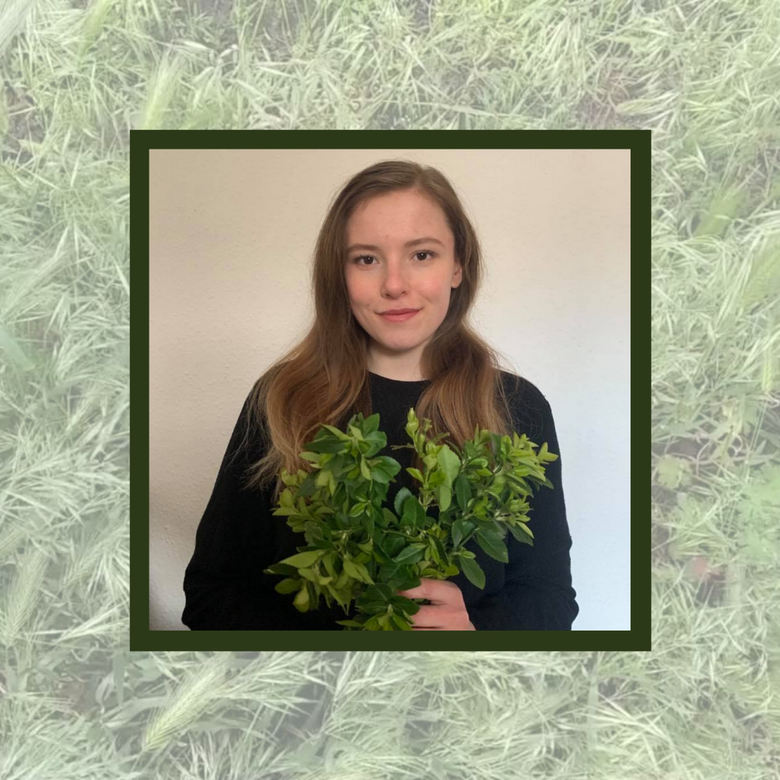The Blood on Our Soil

My naked leaves can no longer bear the heavy flood of blazing sun. With no room to stretch, a crust forms on my outer layers, the curse of long, restless days. Side by side, pressed together in perfect lines, huddled to protect the little red children that tremble within our branches. Across the valley, we gaze at the untamed bushes free to grow and natural rivers free to flow… the burden of my purpose weighed in bulk, slashed in form, plucked and discarded… I am what I serve.
As small semillas,[1] our first ninety days are spent in the warm embrace of each other and mother nature. A calm prevails as gentle rains nourish us, and the soil warms us and the innocence of our being remains untouched in our almácigo.[2] Raised from the earth to grow, independently, into what nature intended. When the time comes, they start to call us chapolas,[3] and we are torn from our earthly home, from our brothers and sisters. Grabbed and condemned to a solitary chain, side by side, like cells in a prison, all in the name of growing us for a purpose. A sick joke, that at such a young age, we are concentrated into different categories with special treatment. Some of us bear the fortune of a dry, grass shield to protect our fragile leaves from the lash of harsh rain. Not me… I was dosed with thiabendazole4 and while it may guard me against disease, it leaves me numb and senseless… lost in a narcotic daze until we are ready for the final stage of our creation.
This is how we got here… our days spent lost in dreams of freedom across the valley. Dreams that each morning guamos[5] would tickle us with their pods and cámbulos[6] would greet us by opening their richly orange blossoms. The first sound to shake our branches would not be the cruel sting of chemical sprays but rather that of little black-and-white warblers[7] and Baltimore orioles.[8] To smell the rich sweetness of a tangerine or to feel the tender breeze of a bat flapping by. Each day filled with life and wonder, nuance and freedom… Most of all, a shade to cover my delicate being that leaves me free to branch out in a way that was always meant to be…
Alas, this life will never be ours… My days are filled with a bright gloominess, never-ending rays of piercing light. Here my limbs, bound, desperate for an escape, keep sucking in the poison. My wax melts, my petals cripple… My only hope that remains is that the more I give from myself each year, the sooner I will leave this deadly soil forever.
***
How foolish I have been, royally sitting in the crisp fluff of my soil. Too busy swinging in the melody of the alphabet songs coming from the distance. Shielded by the walls of greenery. Protected eagerly.
But today, in the midst of branches a window unfolded to reveal the other palpable reality. It was a deserted view, hot and static. As if a wave of an awful fever had flooded us, we all stalled in a horrific fascination. The opening gave a glimpse of the opposite hill, embroidered in never-ending lines of coffee shrubs. A row upon row, upon row, no other being in sight, just the coffee plant surrounded by its replicas. Us, living in the oasis must resemble a nirvana to those strange neighbours abroad.
When the sun started coming down the sap in our branches still stood stagnant. Most of the leaves were just waking up from the paralysis when a farmworker appeared on the road leading to us. Although we have shared many evenings, today his breath smelled funny. As per usual, he crouched down to examine the trunks, dragging his white blouse on the ground. Out of nerve, a couple of crimson cherries burst open as he moved closer, tarnishing his collar.
This was the first sign of our newly found vigilance, the response to all the possible horrors that may hide behind the foliage. Yet the question pressed us down to the earth. Why us and why them?
[1] Seeds
[2] Seedbed, nursery
[3] A coffee seedling with two opposite leaves, in Colombia this term can also be translated as a butterfly
[4] A heavy pesticide used in coffee production
[5] Inga edulis, a type of tree commonly known as the “ice-cream bean tree”
[6] Erythrina poeppigiana, another type of tree commonly known as the “mountain immortelle”
[7] Small migratory birds often found in coffee plantations
[8] Baltimore orioles are another species of migratory birds who are known for a bright orange colour
“It is amazing how much better coffee grows when sung to by birds or when through an opened window comes the sound of a human voice reading words on paper that still holds the memory of the tree it used to be.”
Julia Alvarez (2002), A Cafecito Story.

Coffea arabica
Family: Rubiaceae.
Commonly known as: Coffee.
Native to: Southern Africa and Tropical Asia.
Main uses: Mental alertness, laxative, reduces risk of cardiovascular disease.
Appears in: A Cafecito Story (2002) by Julia Alvarez.
Klára Vítková

Studies: International Relations, and Spanish and Latin American Studies.
Commonly known as: Klara.
Birthplace: Czech Republic.
Interested in: The new perspectives gained by studying history and culture from the angle of plant studies.
Favourite plant: Lily of the valley, which is a commonly found plant in Czech forests. This plant grows in shaded and mysterious locations. It can be very misleading with its soft beauty; however, it is known to be very poisonous.
